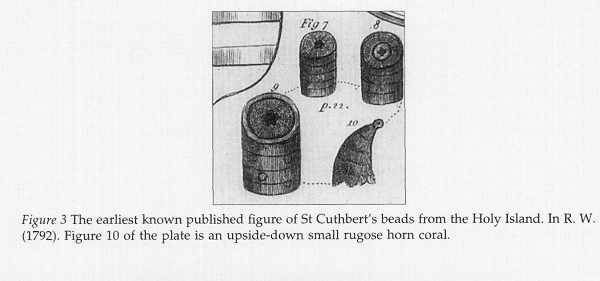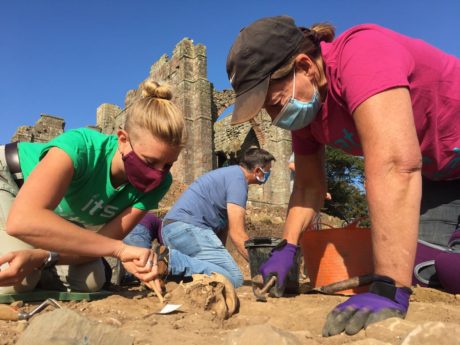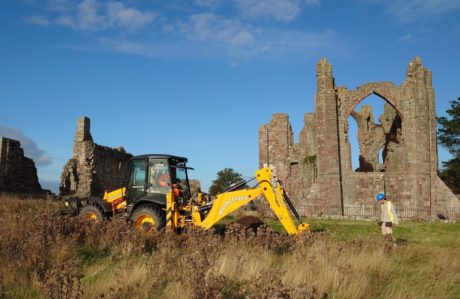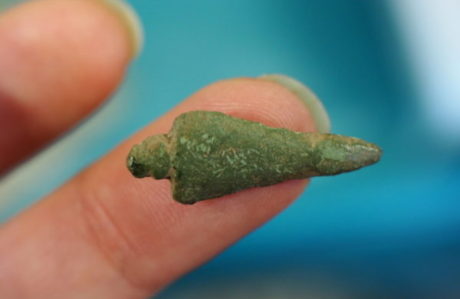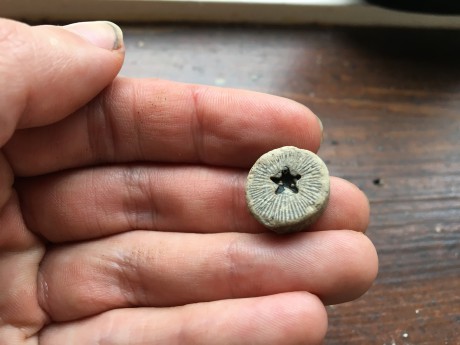
Is it a button? Is it a bead? No it’s a fossil! Every now and then we come across an object that’s a bit special, and on Thursday we had a pretty peculiar find…
Finds processing is now in full swing on the island and we’re starting to get some great stuff coming in! Animal bone and pottery sherds currently make up the bulk of the finds, but every now and then we see something a little different…
Cleaning finds from Trench 3, Sydney found an object that had us all a little bemused. It looked like a tiny piece of ceramic, intricately carved with a series of lines and a star shaped hole cut into the centre. On the outside edge an indentation suggested that it had once been attached to something, but what? Was it a bead? A button hole? Or perhaps a pin head? We were a little stumped.
Once word spread across the site though, it soon became clear that this was something a little more special. Venturer Liz knew exactly what it was: ‘Ohh, it’s a St Cuthbert’s Bead!’, she told us, ‘I’ve spent many hours combing the beach by St Cuthbert’s Isle and have actually found one myself that I carry in my pocket’.
Turns out the object is actually a kind of fossil formed from the stem of a 300-million-year old Crinoid, a marine creature that belongs to the same family of starfish and sea urchins. They would have formed part of an articulated branch structure, which fragmented in to sections once the creature had died.
They’re only really found on one particular beach on Lindisfarne, and that’s the one closest St Cuthbert’s Isle, leading them to become associated with him. Their bead-like structure also inspired the legend that they were incorporated into the rosary.
Liz tells us that, according to legend, St Cuthbert caused these ‘beads’ to wash-up on the shore during storms, and that it’s unlucky to remove the beads from the island. But since she returns to Lindisfarne every year, she reckons she’ll be OK…
